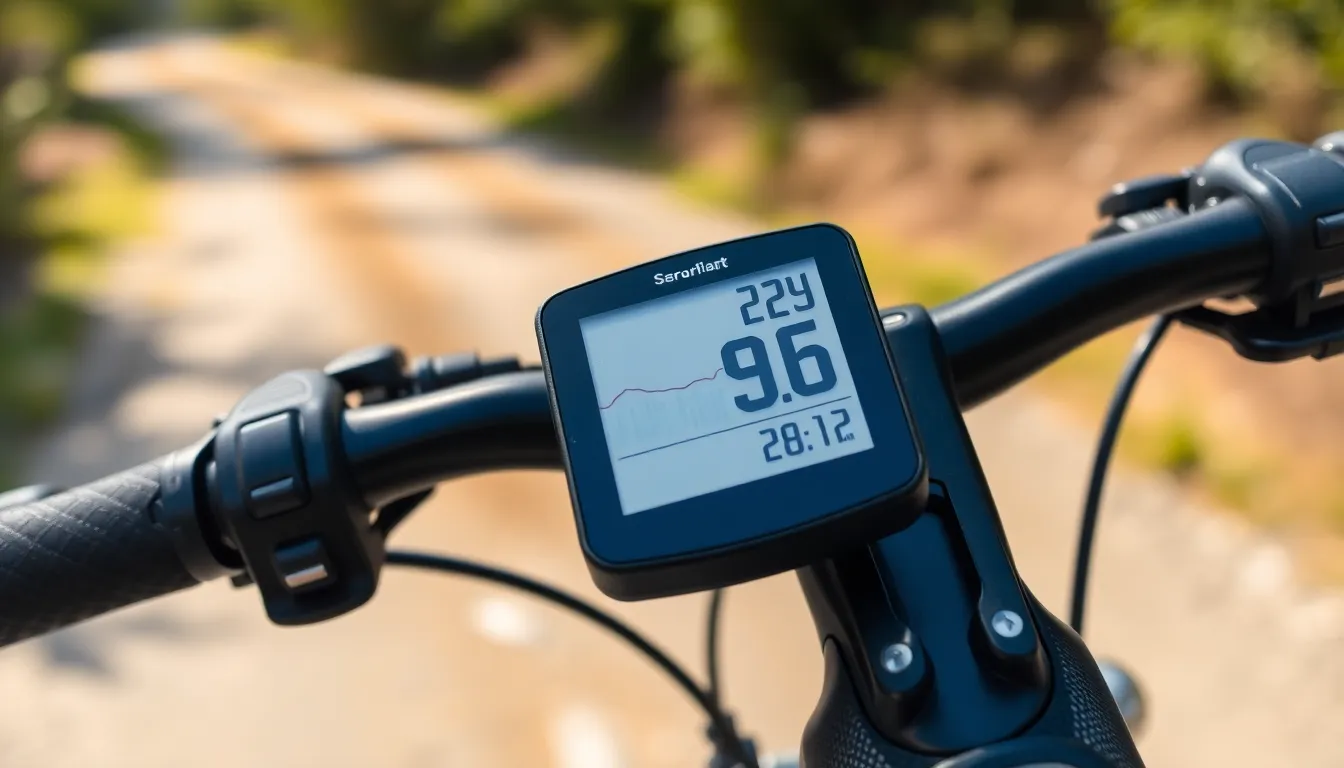In a world where every pedal stroke counts, a bike computer isn’t just a luxury—it’s a necessity. Imagine cruising down the trail, wind in your hair, while your trusty gadget tracks speed, distance, and even how many calories you’ve burned. It’s like having a personal trainer strapped to your handlebars, minus the motivational speeches and sweaty high-fives.
Table of Contents
ToggleOverview of Bike Computers
Bike computers serve as essential tools for cyclists, providing vital data to enhance the riding experience. They track various metrics, making them valuable companions on every ride.
What is a Bike Computer?
A bike computer is an electronic device mounted on a bicycle that measures performance metrics. Common functions include tracking speed, distance, time, and calories burned. Some models connect to GPS, providing additional features like route mapping and elevation tracking. They operate using sensors that relay data from the bike to the display unit, offering real-time statistics during rides. Utilizing a bike computer ensures cyclists gain insights for better training and performance improvement.
Types of Bike Computers
Bike computers fall into several categories, each designed for specific needs. Wired bike computers connect directly to the bike’s components, providing reliable data transmission. Wireless bike computers offer greater flexibility, eliminating cables and enabling easier installation. GPS bike computers integrate satellite tracking for navigation and advanced analytics. Smartphone-compatible bike computers sync with mobile apps, enhancing functionality through additional features. Choosing the right type depends on the cyclist’s requirements and biking style.
Features to Consider

Bike computers come with various features that enhance performance tracking and user experience. Focusing on specific aspects helps cyclists choose the right model for their needs.
Display and Interface
Screen size and readability play crucial roles. Larger displays provide better visibility in bright sunlight. Touch screens offer an intuitive way to navigate menus, while button interfaces may suit cyclists who prefer tactile feedback. Customizable data fields allow users to prioritize important metrics, such as speed or heart rate. Overall, an easy-to-navigate interface can significantly improve interaction during rides.
GPS Functionality
GPS functionality adds significant value to bike computers. It enables real-time location tracking and route mapping for outdoor enthusiasts. Some devices offer navigation features with turn-by-turn directions, enhancing safety on unfamiliar paths. Additionally, tracking historical data allows riders to analyze their routes and performance over time. Advanced models even integrate live tracking, sharing real-time updates with friends and family.
Connectivity Options
Various connectivity options increase the versatility of bike computers. Bluetooth compatibility allows for pairing with smartphones and other devices, enhancing data sharing and syncing capabilities. Ant+ connects sensors for heart rate, cadence, and power monitoring, providing a comprehensive analysis of performance. Some models also feature Wi-Fi for faster updates and data uploads. These options ensure seamless integration into a cyclist’s ecosystem, strengthening the overall riding experience.
Popular Brands and Models
Various brands excel in the bike computer market, offering a range of models tailored to different cyclist needs. These devices enhance performance tracking and overall riding experiences.
High-End Options
Garmin stands out with its Edge series, particularly the Edge 1030 Plus, featuring advanced GPS and comprehensive performance metrics. Another notable brand is Wahoo, known for the ELEMNT ROAM, which provides robust navigation and a user-friendly interface. Elite cyclists often prefer Hammerhead’s Karoo 2 for its intuitive design and extensive mapping capabilities. These high-end models typically come with functionalities like navigation, customizable screens, and compatibility with various sensor technologies, catering to serious cyclists aiming for optimal performance.
Budget-Friendly Choices
Cateye offers excellent entry-level models like the Cateye Strada, providing essential stats without the high price tag. Sigma is another affordable choice, with the ROX 2.0 delivering basic features suitable for casual cyclists. Lezyne also presents budget models, such as the Lezyne Micro GPS, which combines affordability with essential navigational tools. These budget-friendly options focus on core metrics like speed, distance, and time, ensuring accessibility for all cyclists without sacrificing quality.
Pros and Cons of Using a Bike Computer
Bike computers offer various advantages and disadvantages for cyclists. Understanding these factors aids in making informed choices about their use.
Advantages of Bike Computers
Bike computers enhance performance tracking effectively. They provide real-time data on speed, distance, and elevation, enabling riders to monitor their progress. Many models include GPS capabilities, ensuring accurate route tracking. Simple integration with sensors allows for heart rate and cadence monitoring, enriching overall training insights. Many cyclists appreciate the motivational aspect of setting and achieving specific goals with the help of these devices. They also improve safety through navigation features, helping cyclists avoid getting lost in unfamiliar areas.
Disadvantages of Bike Computers
Bike computers do come with certain drawbacks. Some cyclists find the initial investment cost high, especially for advanced models. Complexity can be an issue, as more features might lead to a steeper learning curve for new users. Battery life presents another concern, particularly with GPS-enabled devices that may require frequent recharging. Dependence on electronic devices can detract from the simplicity of cycling for some individuals. Lastly, potential connectivity issues may arise in certain environments, affecting data accuracy and performance tracking.
Bike computers have become indispensable tools for cyclists seeking to enhance their riding experience. They offer valuable insights into performance metrics that help riders set goals and track progress. With various models available cyclists can find one that suits their specific needs whether they’re casual riders or serious athletes.
Investing in a quality bike computer can lead to improved performance and greater enjoyment on the road. As technology continues to evolve bike computers are likely to become even more integrated into the cycling experience making it easier for riders to stay connected and informed. Embracing these devices can transform any ride into a more productive and enjoyable adventure.



